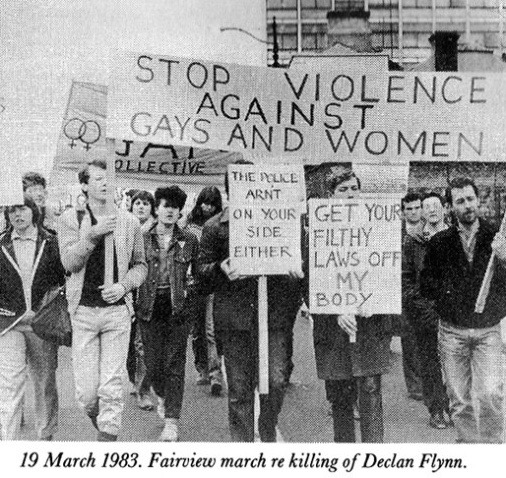Opinion: We’re drifting from the roots of Pride & we need to re-assess

Opinion: We’re drifting from the roots of Pride & we need to re-assess
“Pride is still important, but some aspects of it are drifting away from the original messages.”
For many people across the world, Pride is one of the highlights of the year. It’s a day when LGBT+ people from all walks of life come together to celebrate themselves and to make a statement. It’s also a time to remember those who came before us. While LGBT+ rights have made huge progress in Ireland, it’s less than 25 years ago that homosexuality was decriminalised.
The first march in 1983 was effectively a protest march after the horrific murder of Declan Flynn, a young gay man. Ireland has come a lot further since then, but not everyone is as lucky. Pride in Istanbul ended in rubber bullets, and LGBT+ people still face persecution around the world.
Pride still plays a crucial role in the community. A day where LGBT+ people can be themselves, demonstrate, show solidarity. However, some aspects of Pride seem to be drifting away from the original message.
In the days coming up to Pride, Dublin city was decked in rainbow flags. This was an encouraging sight, but in many cases it seems to be little more than a marketing ploy where corporations simply slap a rainbow flag on their logo and add a clever slogan about coming out. It seems that they have no interest in further supporting the LGBT+ community – the rainbow is as far as it goes – but is a way of boosting their sales by trying to lure LGBT people into their target audience.
The new rainbow logos seen throughout June aren’t about showing solidarity, they’re simply trying to roll in some extra money.
It’s also noteworthy that many of these targeted ads are relatively new, coming around after the same-sex marriage referendum. Now that the majority of Ireland has shown they’re more or less supportive of the LGBT+ community, it is safe and trendy for businesses to flaunt their support. Similarly, Google had rainbow and pride themed logos, despite restricting LGBT content on Youtube this March.
Meanwhile, in London, an odd twist occurred. Most of the posters for London Pride were focused on straight people. Slogans like “I’m a straight man with gay pride”, “My gay friends make me more attractive by association”, and “My sister is gay. I’m straight. Together we’re g-raight”, seem to have completely missed their mark. In one case, there’s a poster that reads: “Being homophobic is sooo gay”.
Despite several focusing on straight people, none of them mention bisexual or transgender people.
Pride is many things, and a celebration of identity is one of them. Nights out, parties, the parade – it’s all part of the fun. There are plenty of cultural events highlighting different aspects of the LGBT+ community, and the struggles faced by them. And admittedly, it is better to see corporations supporting Pride than to have them against it.
“But it’s important to remember where Pride began; it’s not about exploiting Pride as a business opportunity, or marketing it to heterosexual people.”
But it’s important to remember where Pride began; it’s not about exploiting Pride as a business opportunity, or marketing it to heterosexual people. Pride began with trans women of colour protesting the violence against the community in the States, and it began with protesting homophobic violence in Dublin.
Just because Ireland has taken steps towards equality with the recent marriage referendum and other legislation, LGBT+ people still face difficulties on a day-to-day basis. It was just a few weeks ago that The George Nightclub was vandalised, graffitied with gay slurs and swastikas. It was only last weekend that there were accounts of homophobic abuse on public transport after the Pride parade in Dublin. Meanwhile, 50 per cent of schools experience homophobic bullying, and far more young LGBT+ people experience mental illness than their heterosexual peers. In a study by GLEN, 75 per cent of LGBT people have experienced verbal abuse.
Ireland, like the rest of the world, still has much further to go. That’s one of the reasons Pride is crucial; it’s a protest as well as a party. It’s important to look beyond the increasing commercialisation and continue striving for further equality.

